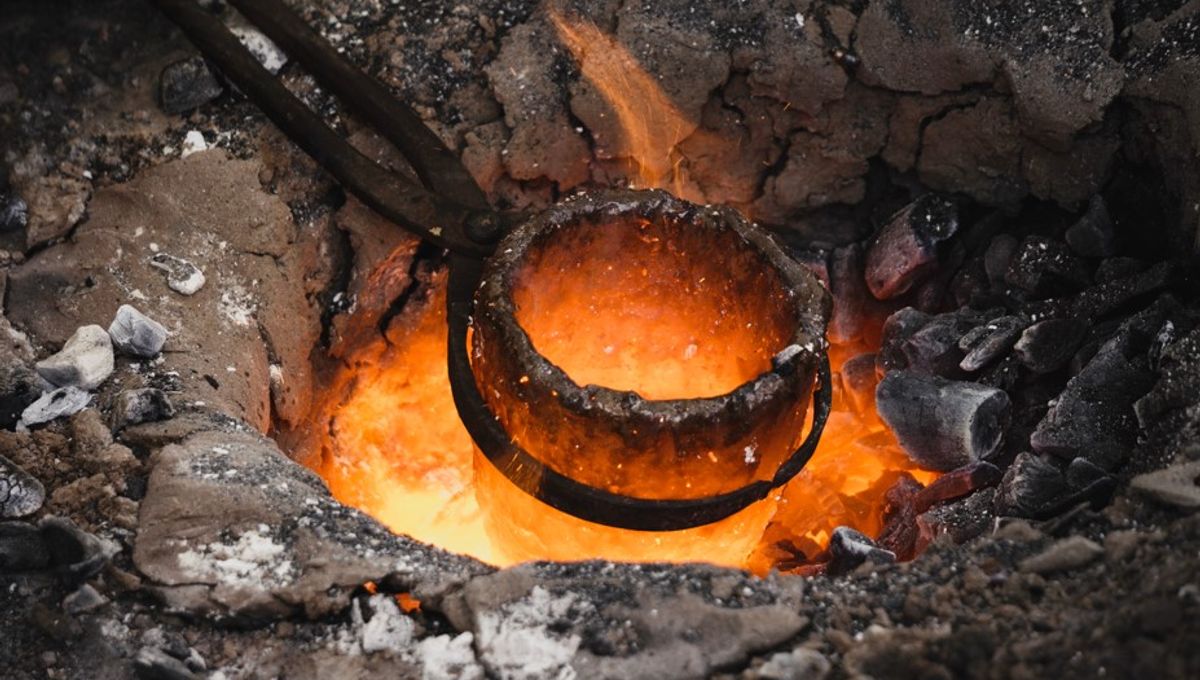
The metal alloys used today in everything from smartphones to spaceships are simply the latest outputs of a metallurgic tradition that stretches all the way back to the Bronze Age, when the first metal mixtures were created. These days, metal mining and processing is a massive industry, yet the first humans to get their hands on these shiny materials did so using little more than stone tools and basic campfires.
Initially, the only metals available to our prehistoric ancestors were those that occurred in their native forms, meaning they could be found as actual nuggets and weren’t mixed up with other elements in rocks. As such, they didn’t have to be extracted, but could be obtained through panning in rivers or basic digging.
The earliest known copper artifacts are around 8,000 years old, while items made of gold start appearing in the archaeological record a couple of millennia later. At this point in history, the technology required to extract terrestrial iron was still way off, although the ancient Egyptians did manage to produce several objects from meteoritic iron, which could be hammered into blades such as that found in the tomb of Tutankhamun.
Things really picked up around 5,000 years ago when humans moved out of the Stone Age and into the Copper Age, largely thanks to the advent of smelting. This process involved heating copper ores in stone or ceramic crucibles in order to separate the metal from its impurities.
Though there’s no record of how this was first achieved, it’s likely that some ancient visionary came up with the idea of blowing air through hollow sticks in order to increase the temperature of a furnace so that the molten metal could be released. Unbeknownst to this primordial smith, the carbon in the wood would also have reacted with oxygen in the ore, converting it to carbon dioxide and freeing the copper to which it was bound.
By all accounts, copper was an okay metal to work with and enabled the creation of new tools and weapons that were much better than their stone predecessors. Crucially, it hardened when hammered, and could even be melted down and cast in molds to produce standardized objects.
However, copper could be massively improved by mixing it with tin, creating an alloy called bronze. Not only was this metallic blend harder than pure copper when hammered, but it also melted at a much lower temperature, making the casting process far easier.
The widespread use of this mixture from around 3000 BCE marked the start of the Bronze Age – a period that saw the creation of numerous different alloys as people experimented with adding zinc and other metals to bronze. This process has never really stopped, and continues to give rise to new alloys with a whole range of futuristic uses.
Just as these modern alloys help to propel us further into the Space Age, the technological advances of the Bronze Age facilitated the expansion of the ancient world’s most powerful civilizations. Yet the iconic era eventually came to an end once people figured out how to smelt iron from rocks, producing an even more useful material and ushering in the Iron Age.
At first, the ancient hearths used in the production of iron could not reach high enough temperatures to actually melt the metal. The first blacksmiths therefore had to make do with wrought iron, which was obtained by separating it from the slag that resulted from the smelting process.
However, it’s thought that some time around 300 BCE, Chinese metalworkers invented a bellows that could be used to create fires hot enough to melt iron.
Funnily enough, iron is actually not as hard as bronze and the items made from this metal were typically of a lower quality than their alloyed predecessors. However, iron was much cheaper to produce than bronze – largely because it is so much more abundant than tin – and was later used to create steel, becoming one of the most essential materials of the modern age.
Source Link: How Did Prehistoric People Extract Metal?